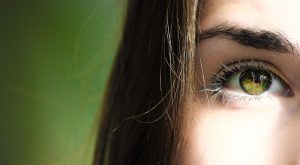Sunglasses and Contact lenses – Frequently Asked Questions
1. Protection
Sun protection for your eyes is incredibly important, especially during our severe African Summers. We should be taking as much care to protect our eyes against the sun as we do our skin. Most sun damage to our eyes occur early in life – late teens to early thirties, but the effects can surface years or even decades later and be devastating to ocular health and vision. Pterygia, which is a non-cancerous wedge-shaped tissue growth that expands from the conjunctiva (the thin membrane which covers the white of the eye) onto the cornea (the clear central part of the eye) often occurring in both eyes (usually on the nasal side); are strongly associated with exposure to UV and are common among people who spend a lot of time outdoors, without the correct eye protection. Wearing sunglasses or moisturizing contact lenses at affordable prices can really protect your eyes from the damaging UV rays.
2. Performance
Professor J.T Ferreira – a forerunner in the field of Sports Vision in South Africa and the founder of the Sports Vision Academy at UJ – is a vehement advocate for the use of protective eyewear in professional and recreational sports. He explains that excessive glare causes visual fatigue that inevitably impacts concentration and performance. The same goes for driving. Driving exerts an enormous amount of strain on the visual system, thus reducing the amount of glare on the road will enhance concentration and reduce fatigue.

So, even if you’re not interested in taking a few shots off your handicap – you’d still benefit from a proper set of sunglasses for your trip to the coast this festive season.
3. Polarized Sunglasses or Not?
Flat road surfaces or calm water are reflecting light that is traveling generally in a direction that is oriented horizontally. This process can create an experience of an extensive intensity of light, that can be annoying and at some times dangerous, or commonly known as glare. Sunglasses that are polarized are containing a particular filter that is reducing the glare and is blocking the intense reflecting light.
4. Why bother with Prescription?
If you have a prescription and you try to wear non-scripted sunglasses, you will probably feel that they impair your vision, no matter how good they are. This is due to the fact that the pupil dilates behind the lens, causing a decrease in the depth of focus. It is therefore definitely advisable for you to have prescription sunglasses if you generally wear glasses.
5. Are contact lenses better to use than prescription glasses?
This is usually up to personal preference. It may also depend on environmental factors. For example, a chef called Sarah prefers to wear contact lenses while she works because her glasses often ‘steam up’ when working in the restaurant’s kitchen environment. However, Sarah prefers to wear her glasses before she goes to bed, as she does not want to fall asleep with her contact lenses in.
6. Why are my eyes always red when I wear my contacts?
Eye redness can be due to many factors including but not limited to dry eyes, allergy to either lens material or solution, lens over-wear, and infection. In order to find out which of these problems you may be experiencing, ask yourself the following questions:
- When do my eyes turn red – immediately upon lens-insertion or only later on in the day?
- If your eyes turn red immediately, you may be sensitive to the lens material or solution that you are using. Make sure to give us a call so we can advise on alternatives. Always make sure that you insert your lenses after cleaning your hands with antibacterial soap and water and preferably before applying any other grooming products – moisturizer/aftershave/make-up as these products tend to be absorbed by the skin on your fingertips and may contain substances that cause stinging when it comes into contact with your eyes. If your eyes only turn red later on in the day, it may be that your lenses are drying out towards the end of the day or that you are wearing them for longer than the recommended wearing time per day. If this is the case, give us a call to chat about possible solutions to this problem. PLEASE do not buy off-the-shelf eye drops that claim to whiten eyes or use your contact lens solution as eyedrops! There are specific products available to address the issue. Using the wrong product may, in fact, make the problem worse in the long run!
- How old are my current lenses – towards the end of their lifespan or brand new?
- If your contact lenses only start to irritate you towards the end of their lifespan, make sure that you adhere to the replacement schedule. DO NOT use monthly disposables for more than one calendar month! Most contact lenses are made from a silicone-hydrogel material in order for them to transfer oxygen through the lens to the eye surface. Normal blinking deposits lipids and proteins from the tear layer into the matrix of the lens, which impairs its oxygen permeability. These deposits are not removed by soaking the lenses overnight and is the reason for the stipulated lifespan of each lens. It is also advisable to have at least one full day (24hrs) of no contact lens wear. This gives your corneal surface time to fully regenerate and reduces the risk of infection as it restores the normal pH balance of the eye surface.
- Do I sleep with my lenses?
- There are only one or two lens options that have FDA approval for extended wear – in other words, daily colored lenses wearable up to 2 weeks. But still, you have to take care of your eyes by removing, cleaning and storing your contact lenses at night. If you are not wearing one of these lenses, chances are you’re doing damage! The available oxygen to the eye in normal open-eye conditions is about 20% (atmospheric oxygen). In the closed-eye conditions such as sleeping – the available oxygen levels drop to about 5%. Introducing a contact lens to either condition reduces the available oxygen by about 5% (as no lens can transfer all the oxygen that passes through it). So, sleeping with your lenses basically depletes the entire available oxygen supply to the eye, which causes dehydration of the cornea, swelling, and redness and increases the chances of infections and ulcers. In my opinion, it’s definitely not worth the risk!

- How old is the solution I’m using?
- You should be replacing your solution daily. When putting your lenses in, throw out the old solution and leave your case to air dry. In the evening, put your lenses into the container and pour the new solution over the lens. Make sure the lenses are covered and not protruding over the edge before closing. Keep your lenses separate – right and left and don’t swap them as your prescription is more than likely different for each eye. This also reduces the risk of spreading infection from one eye to the other. Contact lens solution disinfects and cleans the lenses and it needs to be in contact with the lens for at least 6 hours to be effective. There are also special protein and lipid cleaners that can be used once or twice a month to ensure comfortable usage for the full lifespan of your lens. Once your solution has been opened – make sure to finish it within 90 days of opening. We recommend buying smaller containers and replace more frequently.
- Have I been in contact with any known / new allergens – new solution/face wash/moisturizer/ make-up?
- Sometimes a silly thing like changing your solution/facewash/moisturizer/make-up might have an adverse reaction. Even your laundry detergent or fabric softener might have an effect. There are special medications for eye allergies, should the problem persist, so don’t hesitate to contact us should you experience this problem.
- Are both eyes equally red or is one eye more inflamed than the other?
- Infections usually affect one eye first and then spread to the other. If only one eye is affected, make sure to find out if you need an antibiotic drop to clear the infection. It is wise to discontinue contact lens wear for the duration of treatment unless the contact lens is being used as a “bandage” and discarded after treatment is completed.
